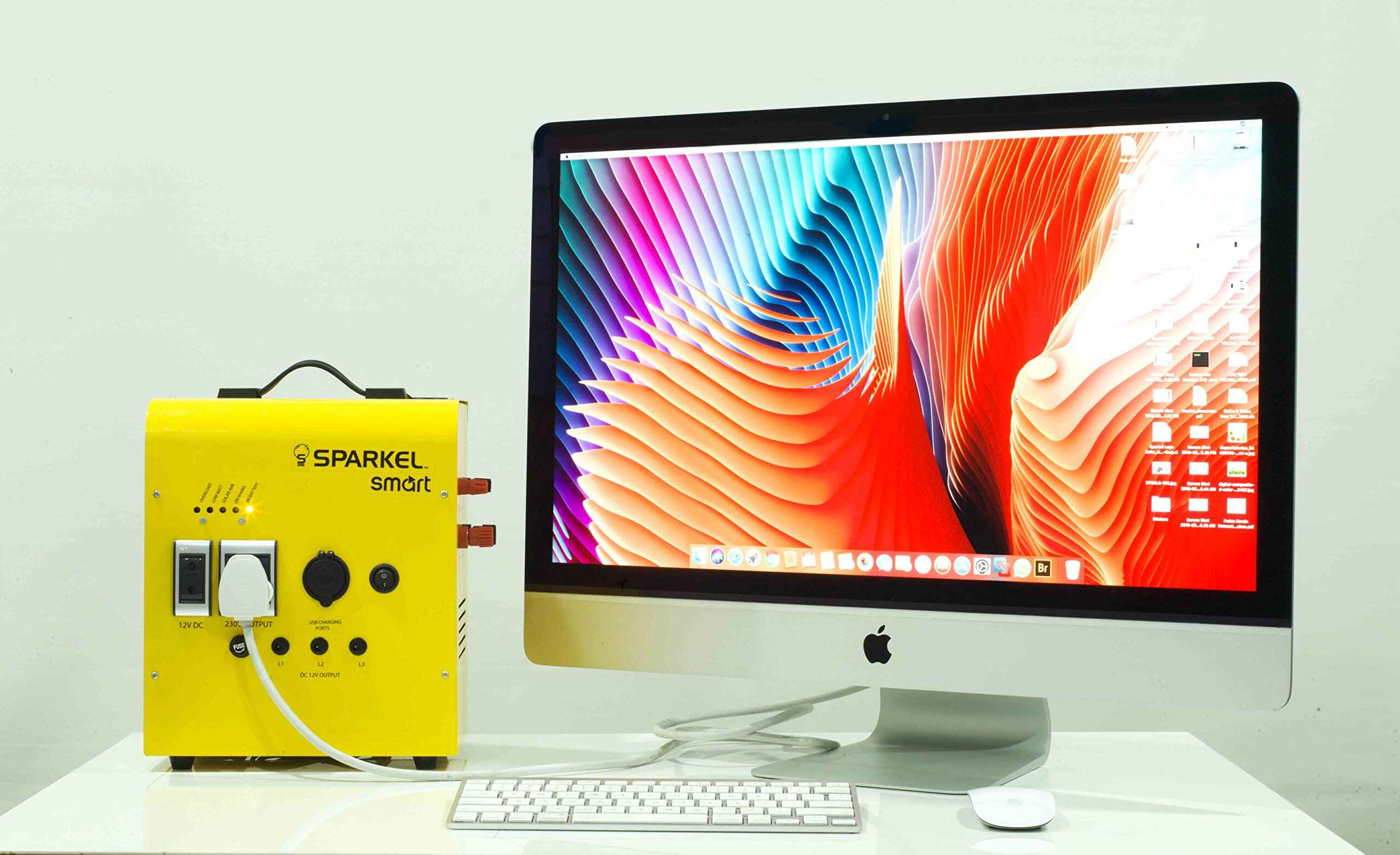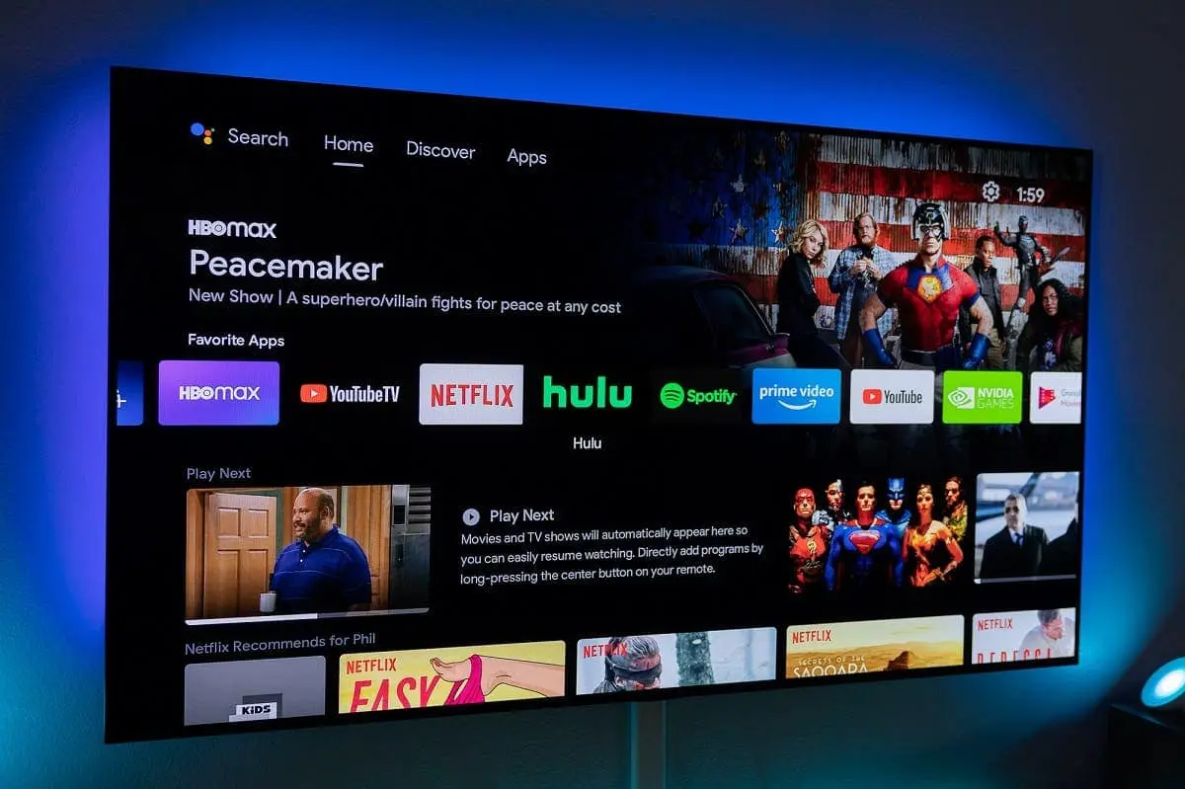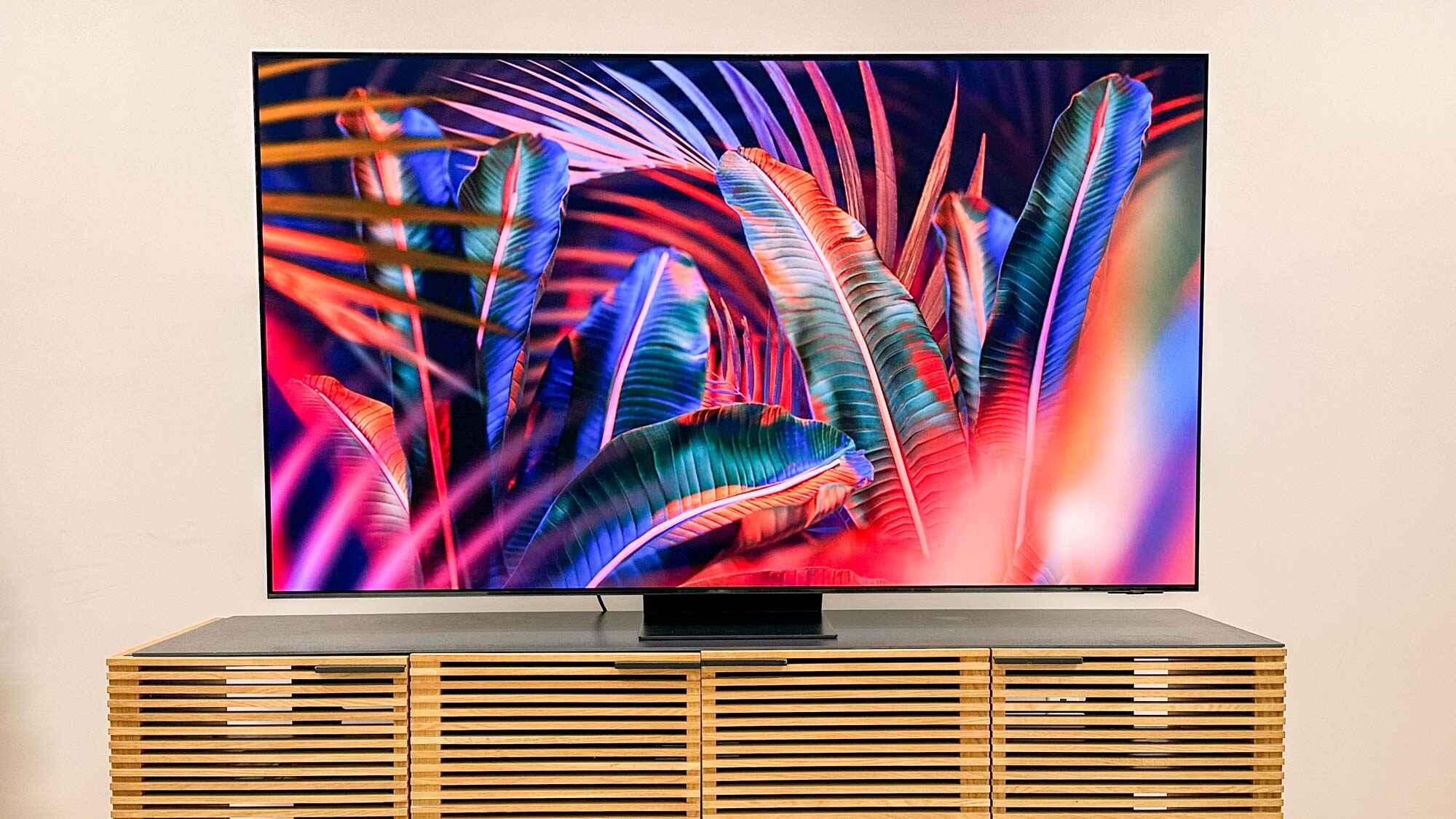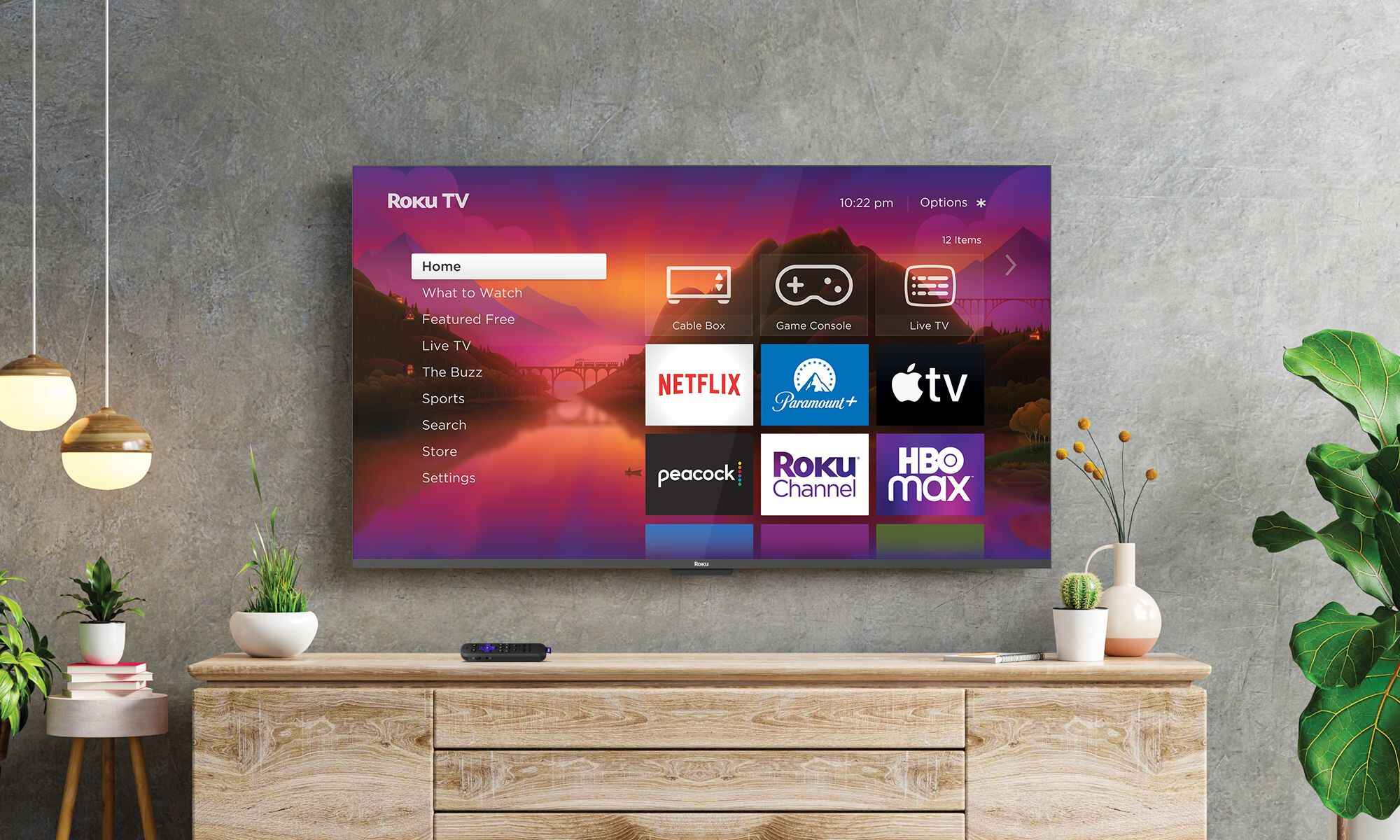Introduction
Welcome to the world of LED TVs, where vibrant colors and stunning visuals transform your viewing experience. As you immerse yourself in the world of entertainment, it is crucial to ensure uninterrupted power supply for your LED TV. That’s where a UPS (Uninterruptible Power Supply) comes into play.
A UPS acts as a safeguard, providing a continuous flow of power to your LED TV during power outages and voltage fluctuations. It acts as a buffer, preventing sudden power interruptions that can potentially damage your TV’s sensitive components.
Whether you are a movie enthusiast, a passionate gamer, or simply love binge-watching your favorite shows, a UPS for your LED TV is a wise investment. It not only protects your valuable entertainment system but also enhances your overall viewing experience by eliminating the frustration caused by sudden power disruptions.
But with a wide range of UPS options available in the market, choosing the right one for your LED TV can be a daunting task. In this article, we will explore the factors you need to consider when selecting a UPS that meets your specific requirements.
From power capacity and backup time to surge protection capabilities and noise levels, each factor plays a crucial role in determining the suitability of a UPS for your LED TV. By understanding these key considerations, you can make an informed decision and ensure the optimal performance and longevity of your TV.
Why do you need a UPS for your LED TV?
Picture this: you’re in the middle of an intense movie scene or a thrilling gaming session on your LED TV when suddenly, the power goes out. Your excitement turns to frustration as you wait for the power to come back on, unsure if your TV and all your unsaved progress will be unharmed. This is where a UPS (Uninterruptible Power Supply) for your LED TV becomes essential.
1. Protection from power outages: Power outages can occur due to various reasons, such as storms, faulty wiring, or utility grid issues. Even a short power outage can cause your LED TV to shut down abruptly, potentially damaging its internal components. With a UPS in place, it acts as a backup power source, keeping your TV running smoothly during power outages and preventing any abrupt shutdowns.
2. Guard against voltage fluctuations: Voltage fluctuations can occur when there are sudden changes in the electrical supply, which can be damaging to your LED TV’s circuitry. A UPS with built-in voltage regulation and surge protection features ensures that your TV receives a stable and consistent power supply, safeguarding it against potential harm from voltage spikes or dips.
3. Avoid data and progress loss: If you use your LED TV for gaming or as a multimedia center, a sudden power loss can result in the loss of unsaved data or progress. With a UPS, you get sufficient backup power to save your work or progress, allowing you to resume your activities seamlessly once the power is restored.
4. Protect your investment: LED TVs are a significant investment, and it’s important to protect them from any potential damage. A UPS acts as a safety net, shielding your TV from unexpected power-related issues and potentially costly repairs. It gives you peace of mind knowing that your investment is well-protected.
5. Uninterrupted entertainment: We all love uninterrupted entertainment, whether it’s watching our favorite movies or enjoying the latest TV shows. A UPS ensures that you can continue to enjoy your entertainment even during power outages, enabling you to relax and unwind without any disruptions.
By investing in a UPS for your LED TV, you ensure uninterrupted power supply, protection from potential damage, and a seamless entertainment experience. It’s a small investment that can provide significant peace of mind and enhance the longevity of your TV.
Factors to consider when choosing a UPS for LED TV
When it comes to selecting a UPS (Uninterruptible Power Supply) for your LED TV, it’s important to consider several factors to ensure that you choose the right one that meets your specific needs. Here are the key factors to consider:
1. Power capacity: The power capacity of the UPS should be sufficient to handle the power requirements of your LED TV and any additional devices connected to it. Check the power consumption of your TV and ensure that the UPS can deliver adequate power to keep it running smoothly.
2. Backup time: The backup time of the UPS is crucial, as it determines how long your LED TV can run on battery power during a power outage. Consider how often power outages occur in your area and choose a UPS with a backup time that can accommodate such situations. It’s advisable to opt for a UPS with a longer backup time to ensure uninterrupted power supply during extended outages.
3. Type of UPS: There are two main types of UPS available: line-interactive UPS and online UPS. Line-interactive UPS provides basic protection against power fluctuations and can switch to the battery backup when necessary. On the other hand, online UPS offers a higher level of protection by continuously supplying power from its battery, filtering out any disturbances from the utility power. Consider your specific power needs and the level of protection required for your LED TV.
4. Surge protection capabilities: LED TVs are sensitive to voltage spikes and surges that can occur during lightning storms or due to electrical malfunctions. Look for a UPS with built-in surge protection features that can safeguard your TV from these electrical disturbances and prevent potential damage.
5. Automatic voltage regulation (AVR): Voltage fluctuations often occur due to unstable or low-quality power supply. A UPS with automatic voltage regulation capability can regulate and stabilize the incoming voltage, protecting your LED TV from the harmful effects of excessive voltage variations.
6. Noise level: Some UPS models generate noise while operating, which can be distracting, especially if your TV is placed in a quiet environment. Consider the noise level of the UPS and opt for a model that operates silently or produces minimal noise to ensure an uninterrupted viewing experience.
7. Price considerations: Evaluate your budget and determine the maximum amount you are willing to spend on a UPS. Compare the features and specifications of different models within your budget range to find the best balance between performance and cost-effectiveness.
By taking these factors into account, you can select a UPS that not only provides reliable power backup but also protects your LED TV from power-related issues, ensuring a seamless and uninterrupted viewing experience.
The power capacity of the UPS
One of the critical factors to consider when choosing a UPS (Uninterruptible Power Supply) for your LED TV is its power capacity. The power capacity of the UPS determines its ability to supply sufficient power to keep your TV running smoothly. Choosing the right power capacity is essential to ensure optimal performance and avoid any potential issues. Here’s what you need to know:
1. Understand the power consumption of your LED TV: LED TVs come with different power ratings, typically measured in watts (W) or volt-amperes (VA). Check the manufacturer’s specifications or the label on the TV to determine its power consumption. This information will give you an idea of the power capacity required for the UPS.
2. Choose a UPS with adequate power capacity: The power capacity of the UPS should be equal to or greater than the power consumption of your LED TV. It’s important not to choose a UPS with a lower power capacity, as it may not be able to handle the load and may result in frequent overload or shutdown of the UPS.
3. Consider additional devices: Take into account any additional devices that you plan to connect to the UPS, such as a set-top box, gaming console, or sound system. These devices also consume power and should be factored into the overall power capacity calculation.
4. Calculate the total power requirement: Calculate the total power requirement by adding the power consumption of your LED TV and the additional devices that will be connected to the UPS. This will give you an estimate of the minimum power capacity you should look for in a UPS.
5. Consider future upgrades: If you plan to upgrade your LED TV or add more power-hungry devices in the future, it’s advisable to choose a UPS with a slightly higher power capacity to accommodate these changes. This ensures that your UPS can handle the increased power demand without any issues.
Remember, having a UPS with a higher power capacity than the actual requirement doesn’t harm your LED TV. It provides a buffer and ensures that the UPS operates within its limits, preventing any strain on its internal components. However, choosing a UPS with a lower power capacity can result in insufficient power supply, leading to potential damage to your TV or frequent tripping of the UPS.
By considering the power consumption of your LED TV, factoring in additional devices, and calculating the total power requirement, you can select a UPS with the appropriate power capacity to provide reliable power backup for your TV.
The backup time of the UPS
When selecting a UPS (Uninterruptible Power Supply) for your LED TV, one crucial factor to consider is the backup time it provides. The backup time of a UPS refers to the duration for which it can supply power to your TV during a power outage. Understanding the backup time is essential to ensure uninterrupted entertainment and protection for your TV. Here’s what you need to know:
1. Assess your power outage patterns: Take into account how frequently you experience power outages in your area and the average duration of these outages. This information will give you an idea of the backup time you need from a UPS. If your area experiences frequent and long-lasting outages, you may want to opt for a UPS with a longer backup time.
2. Consider your usage requirements: Reflect on how you use your LED TV during power outages. Are you primarily using it for occasional movie sessions or gaming, or do you rely heavily on your TV for work or other ongoing activities? If you use your TV for critical tasks during outages, such as working from home or relying on it as a communication medium, you may require a UPS with a longer backup time.
3. Calculate the required backup time: Estimate the duration for which you typically need power backup during outages. Consider factors such as the length of your movie or gaming sessions or the time taken to save work and shut down your equipment safely. Add a buffer to this estimate to ensure you have sufficient backup time in unforeseen circumstances.
4. Understand the relationship between backup time and battery capacity: The backup time of a UPS depends on its battery capacity. Generally, higher battery capacity corresponds to a longer backup time. Keep in mind that backup times may vary depending on the load connected to the UPS. If you have additional devices attached to the UPS, it may reduce the backup time.
5. Assess the trade-off between backup time and price: UPS models with longer backup times usually come at a higher price. Evaluate your budget and prioritize your backup time requirements accordingly. Determine the balance between your needs and the cost to make an informed decision.
By considering the power outage patterns, your usage requirements, and calculating the required backup time, you can choose a UPS that provides the appropriate backup duration for your LED TV. Remember, a longer backup time provides you with peace of mind and ensures uninterrupted entertainment and functionality during power outages.
Type of UPS: Line-Interactive vs Online
When selecting a UPS (Uninterruptible Power Supply) for your LED TV, understanding the different types of UPS available in the market is essential. Two common types of UPS are line-interactive UPS and online UPS. Each type offers distinct features and capabilities to protect and provide power backup to your TV. Here’s a breakdown of the two types:
1. Line-Interactive UPS: Line-interactive UPS systems are the most commonly used type for home and small office setups. These UPS units are designed to handle moderate power fluctuations and provide basic voltage regulation. They are designed to correct minor voltage variations and deliver power directly from the main utility supply to your LED TV. During power outages or significant voltage fluctuations, the UPS switches to its battery power to provide seamless power backup. Line-interactive UPS systems are cost-effective and provide reliable protection against common power issues.
2. Online UPS: Online UPS systems, also known as double-conversion UPS, provide the highest level of protection and power quality for sensitive electronics like LED TVs. These UPS units continuously double-convert the incoming AC power into DC power and then back to AC power. This process isolates your TV from any fluctuations or disturbances in the utility power supply. Since online UPS systems provide a continuous power supply from the battery, they offer complete protection from power disruptions, including voltage spikes, sags, and harmonic distortion. However, the continuous battery operation makes these UPS units less energy-efficient compared to line-interactive UPS systems.
Choosing between line-interactive and online UPS depends on your specific needs and the level of protection you require for your LED TV. Here are a few considerations:
– Power Quality: If you are in an area with frequent voltage fluctuations or poor power quality, an online UPS is the recommended choice. It offers superior power conditioning capabilities to protect your TV from any electrical disturbances.
– Budget: Line-interactive UPS systems are typically more cost-effective compared to online UPS solutions. If you have a limited budget and do not require the highest level of protection, a line-interactive UPS can be a suitable option for your LED TV.
– Load Sensitivity: If your LED TV consists of delicate or high-end components, an online UPS provides better protection due to its continuous power conversion process. It ensures a stable and clean power supply, which is crucial for sensitive electronic devices.
Ultimately, the type of UPS you choose depends on your specific requirements, budget, and the level of protection you need for your LED TV. Assess the power conditions in your area, consider the sensitivity of your TV, and weigh the cost-benefit to make an informed decision.
Surge protection capabilities
Protecting your LED TV from voltage spikes and surges is crucial to ensure its longevity and prevent any potential damage. A UPS (Uninterruptible Power Supply) with built-in surge protection capabilities can safeguard your TV from these electrical disturbances. Understanding surge protection capabilities is essential when choosing a UPS for your LED TV. Here’s what you need to know:
1. What are voltage spikes and surges? Voltage spikes are short, sudden increases in voltage that last for a fraction of a second, often caused by lightning strikes or power grid switching. Voltage surges, on the other hand, are longer periods of increased voltage caused by events such as electrical faults or equipment turning on or off. Both voltage spikes and surges can have damaging effects on electronic devices like LED TVs.
2. Surge protection in UPS: Many UPS models come with built-in surge protection features. These features can suppress or divert excess voltage away from your TV, providing a defense against voltage spikes and surges. Surge protection in a UPS typically involves using metal oxide varistors (MOVs), which divert excess voltage to the ground and protect connected devices.
3. Surge energy rating: Surge energy rating is an important specification to consider when evaluating surge protection capabilities. It indicates the amount of energy the UPS can absorb during a surge event. A higher surge energy rating equates to better protection. Look for a UPS with a surge energy rating that meets or exceeds your specific needs.
4. Response time: The response time of surge protection refers to how quickly the UPS can react to a surge event. It is measured in nanoseconds (ns) and indicates how fast the surge protection circuitry activates to divert excess voltage. A shorter response time is preferable, as it means the UPS can respond quickly and protect your TV from voltage spikes and surges before they can cause any damage.
5. Indicators and alarms: Some UPS models include LED indicators or audible alarms to alert you when a surge event occurs. These indicators provide visual or audible confirmation of surge protection in action, allowing you to monitor the UPS’s performance and take necessary actions if needed.
6. Consider additional surge protection: Depending on your specific needs and the power conditions in your area, you might want to consider additional surge protection devices, such as surge protectors or power strips with surge protection. These devices can add an extra layer of protection by further reducing the risk of voltage spikes or surges reaching your TV.
When selecting a UPS for your LED TV, be sure to choose one with robust surge protection capabilities. These features will help safeguard your TV from voltage spikes and surges, preserving its lifespan and ensuring uninterrupted viewing pleasure.
Automatic voltage regulation (AVR)
Automatic voltage regulation (AVR) is a crucial feature to consider when choosing a UPS (Uninterruptible Power Supply) for your LED TV. AVR helps maintain a stable and consistent voltage supply to your TV, protecting it from the detrimental effects of excessive voltage fluctuations. Here’s everything you need to know about AVR:
1. Why is AVR important? Fluctuations in the incoming voltage can have damaging effects on electronic devices like LED TVs. Low voltage, known as a voltage sag or dip, can cause flickering screens and poor performance. High voltage, known as a voltage spike, can lead to component failure or even permanent damage. AVR ensures that the voltage supplied to your TV remains within safe and acceptable limits, protecting it from these voltage variations.
2. How does AVR work? AVR monitors the incoming voltage from the main power source and automatically adjusts it to maintain a stable output voltage. If the incoming voltage drops below a certain threshold, the AVR boosts it back to the desired level. Similarly, if the incoming voltage exceeds a certain threshold, the AVR regulates it to prevent excessive voltage from reaching your TV.
3. Benefits of AVR for LED TVs: LED TVs are sensitive to voltage fluctuations. Even minor voltage variations can affect the performance and longevity of your TV. AVR helps provide a stable and consistent voltage supply, reducing the risk of flickering screens, picture distortion, or other issues caused by voltage irregularities. By ensuring a steady voltage, AVR can enhance the overall viewing experience and protect your TV from potential damage.
4. Importance during low and high voltage situations: AVR is particularly vital in areas where voltage fluctuations are common. During low-voltage situations, AVR boosts the voltage to the optimal level, preventing issues like dimming screens or audio distortion. In high-voltage situations, AVR regulates the excessive voltage, safeguarding your TV from potential damage caused by voltage spikes.
5. Considerations for AVR in a UPS: When choosing a UPS with AVR, consider the voltage range within which the AVR operates. Look for a UPS that offers a wide input voltage range, allowing it to handle fluctuations effectively. Additionally, pay attention to the response time of the AVR, as a faster response time ensures quicker voltage adjustment and protection for your LED TV.
Having a UPS with AVR is invaluable to maintain a stable voltage supply and provide optimal protection for your LED TV. By ensuring a consistent voltage level, AVR helps prevent potential issues caused by voltage fluctuations, allowing you to enjoy uninterrupted viewing and extend the lifespan of your TV.
Noise level of the UPS
When selecting a UPS (Uninterruptible Power Supply) for your LED TV, it’s important to consider the noise level produced by the UPS during its operation. The noise level can impact your overall viewing experience, especially if your TV is placed in a quiet environment or close to your seating area. Here’s what you need to know about the noise level of the UPS:
1. Fan operation: UPS units typically have a built-in cooling fan to regulate the temperature and keep the internal components within optimal operating conditions. The fan is responsible for generating most of the noise produced by a UPS. It kicks in when the UPS is under heavy load or when the ambient temperature rises.
2. Noise level specifications: Manufacturers provide noise level specifications in decibels (dB) for their UPS models. The noise level is usually measured at a specific distance from the UPS, such as one meter. Some manufacturers may also specify the noise level at different load levels, giving you an idea of how the noise may vary under different circumstances.
3. Silent or low-noise operation: Some UPS models are designed specifically to operate silently or produce minimal noise. These models are ideal if you have a dedicated home theater room or prefer a quiet environment while watching movies or TV shows. Look for UPS units that emphasize silent or low-noise operation if noise is a concern for you.
4. Placement considerations: Proper placement of the UPS can also minimize noise-related issues. Keep the UPS away from the immediate vicinity of your seating area or other areas where noise sensitivity is high. Placing it in a well-ventilated area with sufficient space for air circulation can help reduce fan noise.
5. Load-dependent noise: The noise level of a UPS may vary depending on the load connected to it. Higher loads often result in increased fan operation and, subsequently, more noise. Consider the power requirements of your LED TV and any additional devices connected to the UPS to ensure that the load remains within the UPS’s capacity, minimizing the noise generated.
6. Selecting a noise level suitable for your environment: Choose a UPS with a noise level that matches your environment and personal preferences. If you have a dedicated home theater room or require a quiet environment for critical tasks, opt for a UPS with low noise operation. Alternatively, if noise is less of a concern or the UPS will be placed in an area away from sensitive ears, you may consider a UPS with a higher noise level that offers additional features or capabilities.
By considering the noise level of the UPS and understanding its impact on your viewing environment, you can choose a UPS that balances both performance and noise considerations to ensure an enjoyable and immersive TV-watching experience.
Price considerations
When choosing a UPS (Uninterruptible Power Supply) for your LED TV, price is an important factor to consider. You want to ensure that you get the best value for your money without compromising on the quality and features that are essential for protecting and providing reliable power backup to your TV. Here are some considerations regarding the price of a UPS:
1. Set a budget: Determine how much you are willing to spend on a UPS for your LED TV. Setting a budget can help narrow down your options and prevent overspending on unnecessary features or functionalities.
2. Evaluate your needs: Consider your specific power requirements and the level of protection you need for your TV. Assess the frequency and duration of power outages in your area, the sensitivity of your LED TV to voltage fluctuations, and any additional devices that need power backup. Understanding your needs will help you prioritize the features and functionalities that are worth the investment.
3. Compare prices and features: Conduct thorough research and compare prices and features across different UPS models. Look for a balance between price and the features that are essential for your requirements. Consider factors such as power capacity, backup time, surge protection capabilities, and the reputation of the manufacturer.
4. Consider long-term costs: While price is important, also consider the long-term costs associated with owning a UPS. Look for UPS units that offer energy-efficient features and battery replacement options that are cost-effective. Additionally, consider the warranty and customer support provided by the manufacturer, as this can impact the overall value you receive from your investment.
5. Be mindful of cheap alternatives: While it may be tempting to opt for a cheaper alternative, be cautious of low-quality or counterfeit UPS units. Investing in a reputable brand and reliable product will ensure that you receive the necessary protection and performance for your LED TV.
6. Seek expert advice: If you are uncertain about which UPS model suits your requirements and budget, it can be helpful to seek advice from professionals or consult online reviews. These resources can provide insights into the performance, reliability, and value of different UPS models.
Remember that price alone should not be the sole determining factor. It’s essential to strike a balance between your budget and the features that are critical for protecting your LED TV and providing reliable power backup. By considering your needs, comparing prices and features, and evaluating long-term costs, you can make an informed decision and choose a UPS that offers the best value for your investment.
Conclusion
Choosing the right UPS (Uninterruptible Power Supply) for your LED TV is vital to ensure uninterrupted power supply and protect your TV from potential damage caused by power outages and voltage fluctuations. By considering various factors, you can make an informed decision and select a UPS that meets your specific needs. Here’s a brief recap of the key points discussed throughout the article:
– Determine why you need a UPS for your LED TV, such as protecting your investment, avoiding data loss, and ensuring uninterrupted entertainment.
– Factors to consider when choosing a UPS include the power capacity, backup time, type of UPS (line-interactive vs online), surge protection capabilities, automatic voltage regulation (AVR), noise level, and price.
– Assess the power consumption of your LED TV and any additional devices to ensure the UPS has sufficient power capacity.
– Consider the backup time required based on the frequency and duration of power outages in your area, as well as your specific usage needs.
– Determine whether a line-interactive or online UPS is better suited to your requirements by considering power quality, budget, and load sensitivity.
– Evaluate the surge protection capabilities of the UPS, including surge energy rating and response time, to safeguard your TV from voltage spikes and surges.
– Automatic voltage regulation (AVR) helps maintain a stable voltage supply, protecting your TV from the damaging effects of voltage fluctuations.
– Noise level considerations are crucial, especially if your TV is in a quiet environment, so choose a UPS with minimal noise operation or proper placement.
– Price considerations involve setting a budget, evaluating needs, comparing prices and features, considering long-term costs, and avoiding cheap alternatives.
By taking into account these factors and considerations, you can choose a UPS that not only provides reliable power backup but also protects your LED TV, enhances your viewing experience, and ensures the longevity of your valuable entertainment system.
















![10 Best Non-Blocked Torrent Sites To Try Now [2020 Edition]](https://robots.net/wp-content/uploads/2019/08/torrent-35656_1280-170x170.png)








